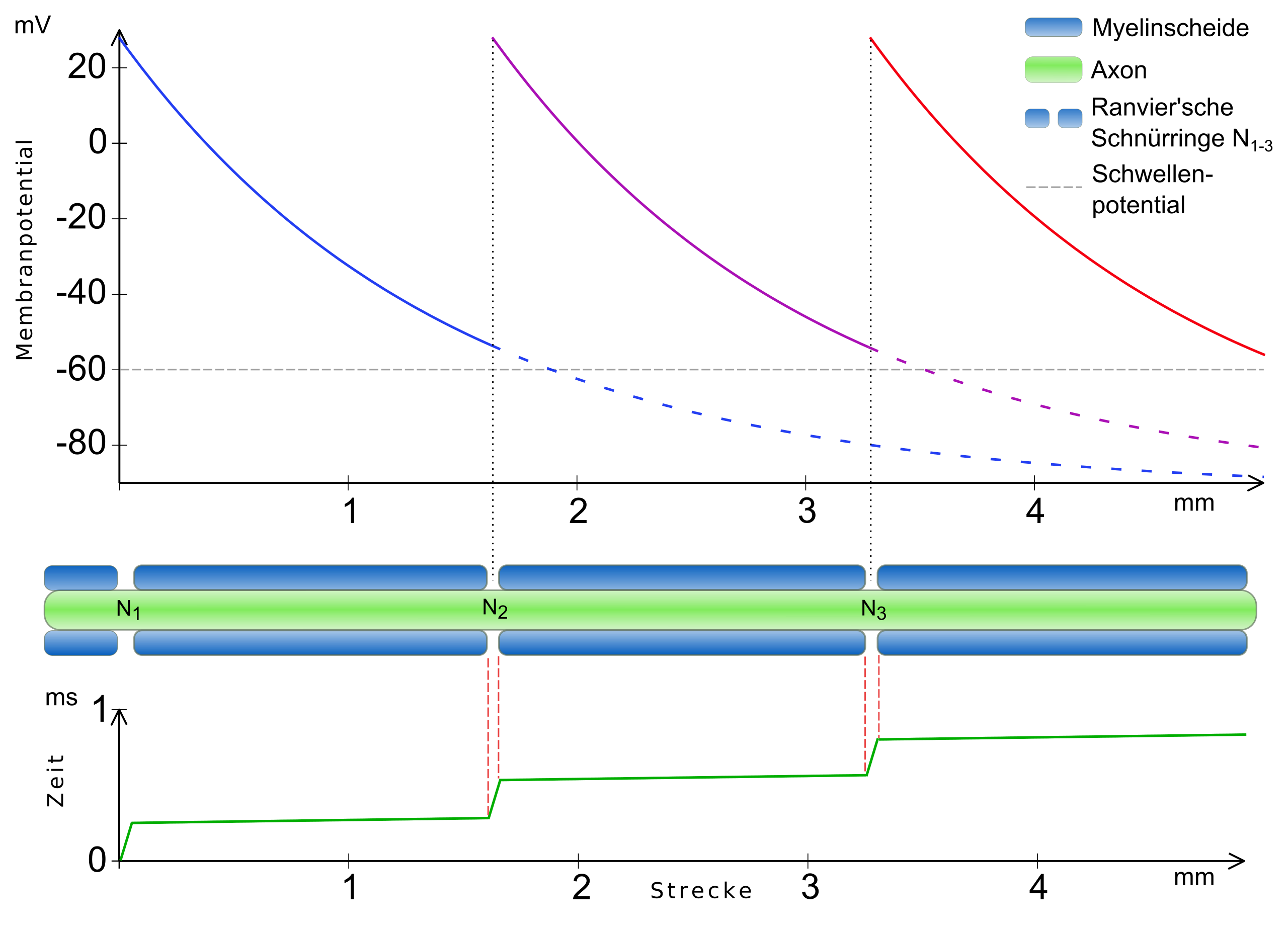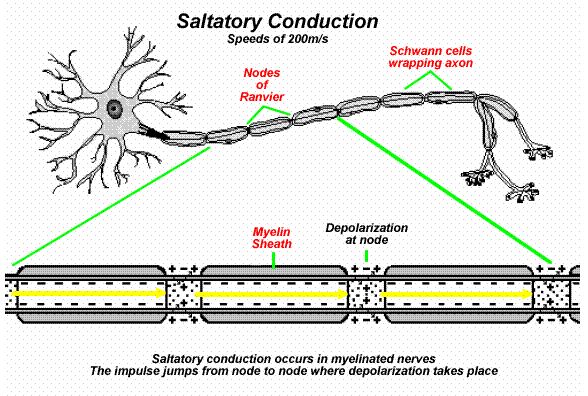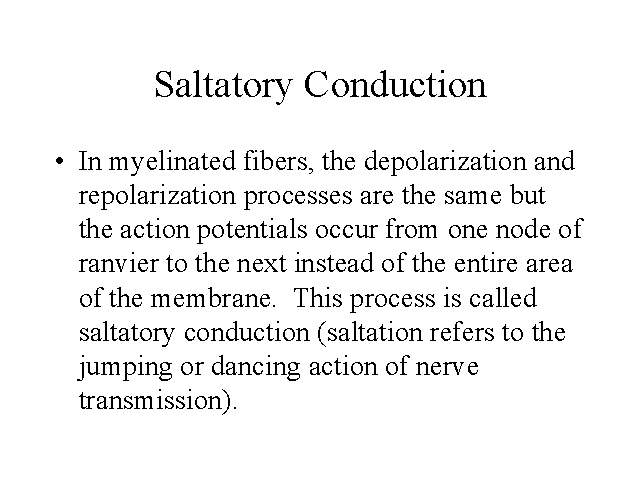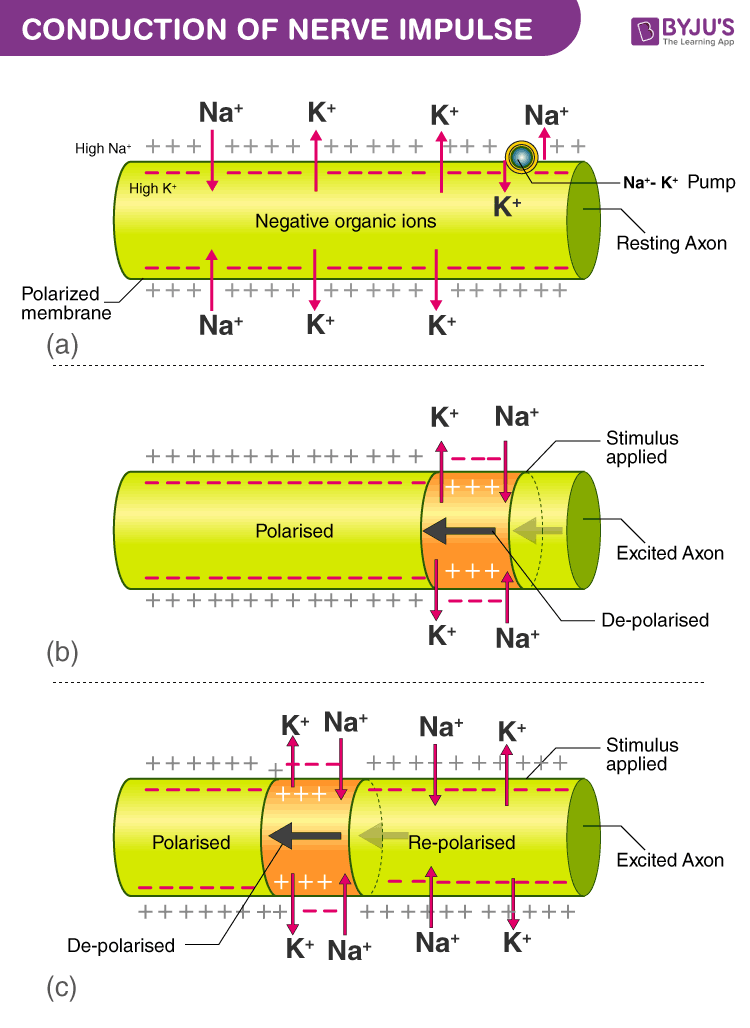Saltatory propagation is the process of transmitting electrical signals along a myelinated nerve. Myelin is a protective sheath that surrounds the axons of certain neurons and is composed of lipids and proteins. The myelin sheath acts as an insulator, allowing electrical signals to travel more efficiently and faster along the axon.
In contrast to unmyelinated axons, which rely on continuous conduction of electrical signals, saltatory propagation occurs in myelinated axons in a "jumping" or "saltatory" manner. Specifically, the electrical signal is transmitted from one node of Ranvier to the next, rather than being continuously conducted down the entire length of the axon.
This process occurs because the myelin sheath is not continuous along the axon, but rather is composed of segments called internodes. The gaps between the internodes are called nodes of Ranvier. At these nodes, the myelin sheath is thin or absent, allowing ion channels to be concentrated. As a result, the ion channels at the nodes of Ranvier are able to quickly regenerate the electrical signal, enabling it to jump or "saltate" from one node to the next.
Saltatory propagation allows for much faster transmission of electrical signals along myelinated axons compared to unmyelinated axons. For example, the conduction velocity of a myelinated axon can be up to 100 meters per second, while the conduction velocity of an unmyelinated axon is typically only a few meters per second. This difference in conduction velocity is important for the proper functioning of the nervous system, as it allows for rapid communication between neurons and the muscles and organs they innervate.
In addition to its role in the nervous system, saltatory propagation is also important in the development and maintenance of myelin. Myelin is produced by cells called oligodendrocytes in the central nervous system (CNS) and Schwann cells in the peripheral nervous system (PNS). These cells wrap their processes around the axons of neurons, forming the myelin sheath. The process of myelination is essential for the proper functioning of the nervous system and begins during fetal development. Myelination continues throughout life and is necessary for the repair of damaged myelin.
In summary, saltatory propagation is the process by which electrical signals are transmitted along myelinated axons in a "jumping" or "saltatory" manner. This process allows for faster transmission of signals and is essential for the proper functioning of the nervous system. It is also important in the development and maintenance of myelin, which is produced by oligodendrocytes in the CNS and Schwann cells in the PNS.







